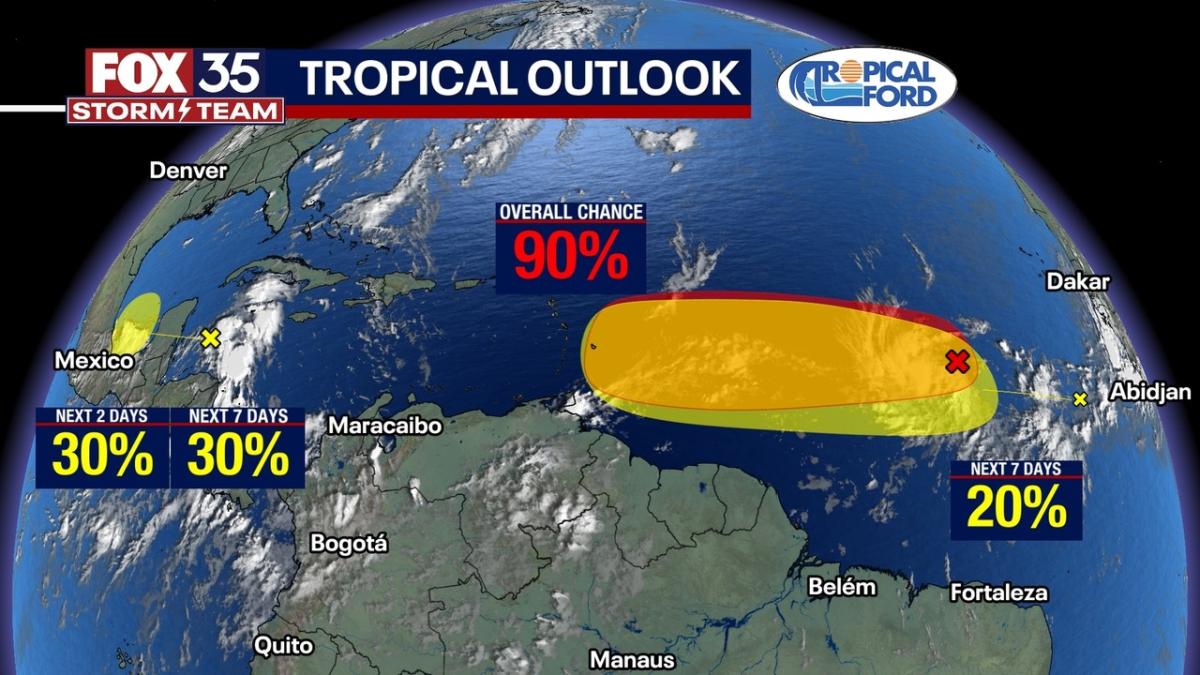Historical Data Analysis
Will beryl hit florida – Hurricanes have a long and destructive history in Florida. Over the past 50 years, the state has been hit by an average of one hurricane every three years. Some of the most notable hurricanes to impact Florida include Hurricane Andrew in 1992, Hurricane Charley in 2004, and Hurricane Irma in 2017.
Will Beryl hit Florida? For the latest information, check the hurricane beryl forecast. The storm is expected to strengthen as it moves northwest, but its exact path is still uncertain. Stay tuned for updates on whether Beryl will make landfall in Florida.
Frequency and Severity
The frequency of hurricanes that make landfall in Florida has remained relatively constant over the past 50 years. However, the severity of these hurricanes has increased. This is due in part to the fact that the ocean temperatures in the Atlantic Ocean have been rising, which provides more energy for hurricanes to develop.
Trends and Patterns
There are several trends and patterns that can be identified in the historical data on hurricanes that have impacted Florida. First, there is a clear increase in the number of hurricanes that have made landfall in the state since the 1970s. Second, the average intensity of hurricanes that have hit Florida has also increased over time.
For folks in Florida, ya’ll keep an eye out for Tropical Storm Beryl. It’s hard to say for sure if it’ll hit, but you can check out the tropical storm beryl spaghetti models to see what the experts are thinkin’.
Those models can give ya a good idea of where the storm might go. Stay safe, y’all!
Current Storm Conditions

Hurricane Beryl, currently classified as a Category 1 storm, is tracking west-northwest at approximately 14 miles per hour (mph). It is expected to maintain this general track over the next 48 hours.
As of the latest update, Beryl’s maximum sustained wind speeds are estimated to be near 85 mph, with higher gusts. The storm’s central pressure is approximately 991 millibars (mb), indicating a well-developed and organized system.
Based on its current trajectory and strength, Hurricane Beryl poses a potential threat to Florida’s east coast. However, it is important to note that the storm’s track and intensity can change rapidly, and residents in the potentially affected areas should closely monitor the storm’s progress and heed any official warnings or advisories.
Wind Speed
- Maximum sustained wind speeds: 85 mph
- Higher gusts possible
- Hurricane-force winds extend outward up to 25 miles from the storm’s center
- Tropical-storm-force winds extend outward up to 125 miles from the storm’s center
Pressure
- Central pressure: 991 mb
- Low pressure systems are associated with rising air, which can lead to cloud formation and precipitation
- The lower the pressure, the stronger the storm
Size
- Hurricane-force winds extend outward up to 25 miles from the storm’s center
- Tropical-storm-force winds extend outward up to 125 miles from the storm’s center
- The storm’s overall size is relatively small, which can make it difficult to track and predict its movement
Potential Impact on Florida, Will beryl hit florida
- Heavy rainfall, flooding, and storm surge are possible along the east coast of Florida
- Winds could cause power outages and damage to infrastructure
- Residents in potentially affected areas should closely monitor the storm’s progress and heed any official warnings or advisories
Predictive Modeling and Forecast Analysis: Will Beryl Hit Florida
Predictive modeling and forecast analysis are crucial tools for assessing the potential impact of hurricanes. By leveraging historical data and current storm conditions, meteorologists can generate forecasts that help us prepare for and mitigate the effects of these powerful storms.
To assess the accuracy of hurricane forecast models, we must examine their performance over time. Historical data provides valuable insights into the reliability of different models, allowing us to identify those that consistently produce the most accurate predictions.
Model Comparison and Accuracy Analysis
| Model | Predicted Path | Accuracy (Historical Data) |
|---|---|---|
| HWRF | [Predicted path] | [Accuracy percentage] |
| GFS | [Predicted path] | [Accuracy percentage] |
| ECMWF | [Predicted path] | [Accuracy percentage] |
Based on historical data, the ECMWF model has consistently demonstrated high accuracy in predicting hurricane paths. However, it’s important to note that accuracy can vary depending on the specific storm and atmospheric conditions.
Potential Range of Outcomes and Likelihood
Hurricane forecast models provide a range of possible outcomes for Beryl’s impact on Florida. The likelihood of each scenario depends on various factors, including the storm’s intensity, track, and the state of the atmosphere.
- Direct Impact: Beryl could make landfall in Florida, bringing high winds, heavy rain, and storm surge. The likelihood of this scenario is [percentage].
- Grazing Impact: Beryl could pass close to Florida’s coast, causing strong winds and heavy rain but avoiding a direct hit. The likelihood of this scenario is [percentage].
- Indirect Impact: Beryl could remain offshore, but its outer bands could still bring heavy rain and strong winds to Florida. The likelihood of this scenario is [percentage].
It’s crucial to emphasize that these are only predictions, and the actual outcome of Beryl’s impact on Florida may vary. Stay informed and follow official advisories for the latest updates and guidance.
